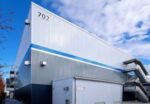Electric vehicle development for world markets
Mahindra & Mahindra, part of USD 19.4 billion Mahindra Group, and REE Automotive have signed a memorandum of understanding (MOU) to explore development and manufacturing of electric commercial vehicles for global markets. Such a strategic collaboration will leverage REE’s revolutionary electric vehicle corner module and platform technology of integrating powertrain, suspension and steering components in the arch of a vehicle wheel. This coupled with Mahindra’s well-established vehicle design, engineering, sourcing capability and manufacturing assets, is set to be a win-win strategic partnership for both companies. The partnership will support REE’s global customer need for 200,000-250,000 electric commercial vehicle units over a few years, including potential Mahindra’s domestic and international volumes. Production would be scaled further to support additional volume in the global as well as Indian market. “Our collaboration with REE has the potential to bring a disruptive approach to a new age of vehicles capitalising on our respective strengths,” said Rajesh Jejurikar, Executive Director (Auto and Farm Sectors), Mahindra & Mahindra. “The competitive advantages of REE’s corner modular architecture with our experience in conventional vehicle system design, engineering, sourcing ecosystem and significant production capacity, provides a perfect match to deliver exciting zero emission vehicles, including autonomous vehicles, that can meet customer needs as never before.” REE’s architecture will enhance Mahindra’s capabilities in the electric vehicle sector. REE will leverage Mahindra’s global presence and its unique volume flexibility capability as well as its engineering and product development expertise. REE’s transformational technology is designed for current and future e-mobility applications, including autonomous vehicles, and offers significant benefits in terms of weight, space and total body design flexibility. The scalability of the platform makes it ideal for any form of electric vehicle such as commercial vehicles, mid-duty delivery trucks, last mile delivery, passenger cars, taxis and shuttles. About Mahindra The Mahindra Group is […]










